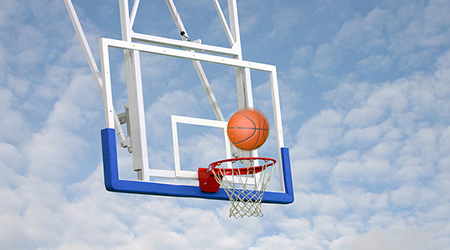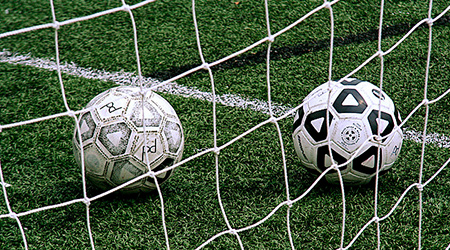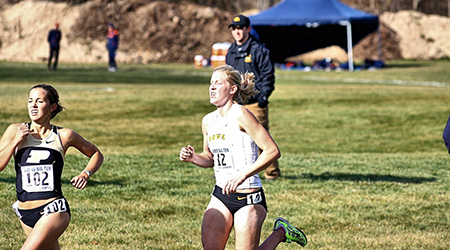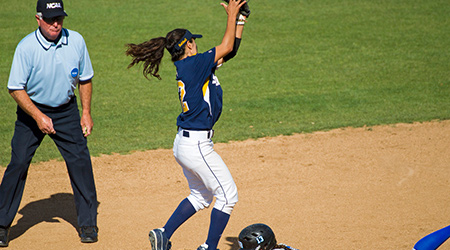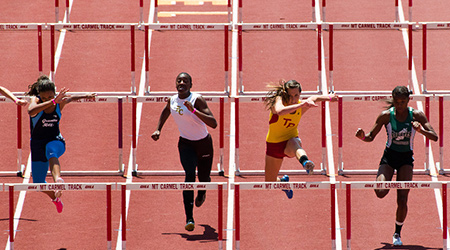9 Sports That Thrived After Title IX
Now celebrating its 40th anniversary, here is the crucial snippet from Title IX of the Education Amendments of 1972: “No person in the United States shall, on the basis of sex, be excluded from participation in, be denied the benefits of, or be subjected to discrimination under any education program or activity.” This legislation has many implications, but its results have been most visible in sports. After some resistance from the NCAA, equality of funding for women’s athletics was implemented in the late 1970s for any college accepting federal money (the vast majority of them … not to mention many states have passed similar laws covering 100% of schools). It’s had a huge impact on education and the lives of millions of girls. Here are nine sports that have reaped the benefits:
Basketball
Women’s basketball has been played since 1892, the year after the men’s version was invented. However, the investment made through Title IX made it much more prominent. With the exception of the 1980 Moscow Olympics, which we boycotted, the U.S. women’s basketball team has taken the gold medal in seven out of eight Olympic Games since the implementation of Title IX. To celebrate the 40th anniversary of Title IX earlier this year, members of the Cabinet (such as Secretary of Education Arne Duncan, Secretary of Health and Human Services Kathleen Sebelius, Secretary of the Interior Ken Salazar, and U.N. Ambassador Susan Rice) got together with college and WNBA athletes (whose league is also hard to imagine without the law) for a friendly game of their President’s favorite sport.
Volleyball
Volleyball is actually the second most common college women’s sport, offered at 95.7% of schools, putting it behind basketball’s 98.8% but ahead of soccer’s 92%. There’s been a slight bit of controversy about the attrition of men’s volleyball teams; the equal funding guaranteed by Title IX has not always been popular among the menfolk, though supporters say it has not hurt men’s athletics. In any case, women’s volleyball accounted for two of the most popular events (both the beach and regular variety) at this summer’s London Olympics.
Soccer
The emergence of women’s soccer as a spectator sport was heralded by the U.S. win at the 1999 World Cup and its iconic emblem: a triumphant Brandi Chastain yanking her shirt off and exulting in the pure thrill of victory. Widely seen as a historic moment of women’s athletics, it’s one of the great images in sports, but behind it lies the passion and hard work of thousands of varsity players and coaches under Title IX … and after it came even greater enthusiasm for soccer among young women.
Cross Country
The fourth most common women’s sport is cross country running, at 90.8% of schools. It was one of 12 women’s sports the NCAA adopted in 1981 in the process of Title IX implementation, and today there are over 1000 teams across the three divisions. Female cross country runners usually run five- or six-kilometer open-air courses and the prime season is from fall into winter.
Softball
In this interview, Dot Richardson, who won two Olympic gold medals in softball and the Babe Zaharias Award in 1997 for female athlete of the year, talks about the impact Title IX made on her life. Softball is the fifth most popular NCAA women’s sport, with 89.2% of colleges fielding a team.
Tennis
Women’s tennis has boasted some of the most high-profile female athletes, such as Venus and Serena Williams. Their forerunner Billie Jean King represents an earlier pre-Title IX generation of female athletes, and in a recent interview she forcefully advocated for its value. True to form, King made some tough points, including “Money is everything in sports … until people face reality we’ll be dabbling in nonsense forever,” and “Women need to support women.” 84.7% of schools offer women’s tennis, making it the sixth biggest intercollegiate women’s sport.
Track and Field
This article and video spotlight track star Jackie Joyner-Kersee, dubbed “the greatest female athlete of the 20th century” by Sports Illustrated Women, who was 10 when Title IX passed and may never have received her scholarship to UCLA, or made the history books, without it. Track and field is offered for women attending 70.9% of colleges.
Golf
Babe Didrikson Zaharias, the dominant female athlete of the first half of the 20th century, was famously a multi-sport achiever, but she had the biggest impact on golf. Still, even in the wake of her unprecedented fame, it was relatively rare for colleges to offer serious women’s golf programs, until passage of Title IX. Now it’s the eighth most prominent on college campuses, with 54.4% of schools hitting the links.
Swimming
The life aquatic has been one of the main battlegrounds (or the naval equivalent) in the fight over Title IX. Men’s swim teams have been forced to operate on a shoestring budget, or cut altogether. Many of the guys blame Title IX. The law’s defenders respond by saying, don’t blame the fairer sex, blame the bloated football and men’s basketball programs that take resources away from more varied (and cheaper) male sports like wrestling and swimming. Ladies, meanwhile, swim at 52.3% of colleges, making swimming the ninth most offered women’s sport.

